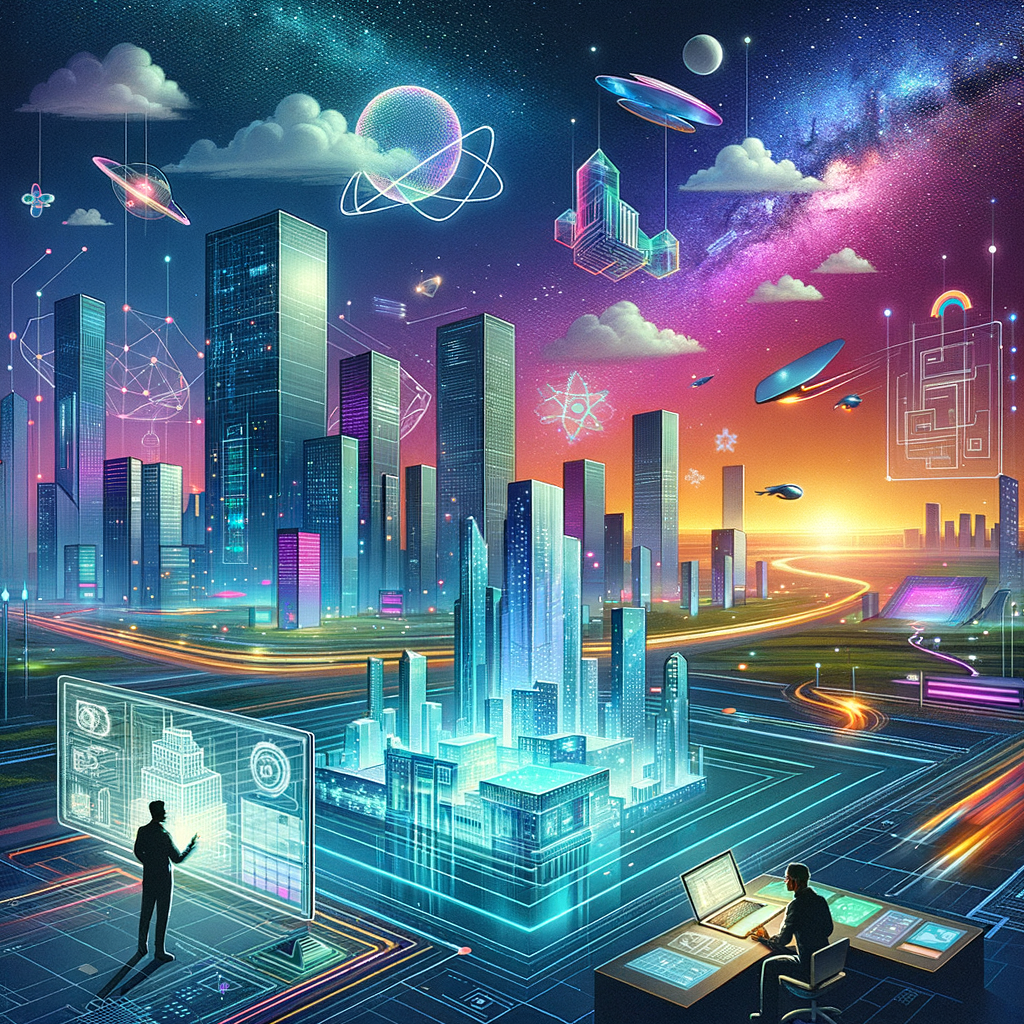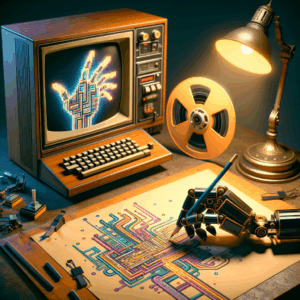
Futuristic Design Styles: Stunning Must-Have Prompts For Creators
- Understanding Futuristic Design Styles
- Key Characteristics of Futuristic Design Styles
- 1. Minimalism
- 2. Geometric Shapes
- 3. Bold Colors and Gradients
- 4. High-Tech Materials
- 5. Integration of Technology
- 6. Organic Forms
- Stunning Prompts for Creators
- 1. Reimagine Urban Architecture
- 2. Futuristic Transportation
- 3. Smart Home Concepts
- 4. Fashion Meets Technology
- 5. Interactive Art Installations
- 6. Rethinking Public Spaces
- 7. Futuristic Product Design
- 8. Futuristic Gaming Spaces
- 9. Biophilic Design
- 10. Wearable Tech and Health
- Best Practices for Implementing Futuristic Design
- 1. Research and Stay Updated
- 2. Prototype and Iterate
- 3. Collaborate with Other Creators
- 4. Focus on User Experience
- 5. Sustainability Matters
- Conclusion
- Frequently Asked Questions
- 1. What is futuristic design?
- 2. How can I incorporate futuristic design into my work?
- 3. What tools can help me create futuristic designs?
- 4. Are there specific industries that benefit from futuristic design?
- 5. How important is sustainability in futuristic design?
- 6. Can I mix futuristic design with classic styles?
- 7. What role does color play in futuristic design?
- 8. Are there educational resources for learning about futuristic design?
- 9. How can I get feedback on my designs?
- 10. What trends should I watch for in the future?
Understanding Futuristic Design Styles
Futuristic design styles capture the imagination by blending innovation and creativity. As technology evolves, so does design. Whether you’re a graphic designer, product developer, or interior decorator, these styles offer unique possibilities. By embracing these elements, creators can transform their work into something remarkable.
Imagine a world where minimalism meets high-tech aesthetics. This vision shapes many futuristic designs. The balance of form and function is crucial. Designers aim to create experiences rather than just products. This approach results in something engaging and thought-provoking.
Key Characteristics of Futuristic Design Styles
Futuristic design boasts several distinct features. These elements help define what makes a design feel forward-thinking. By understanding these characteristics, creators can consciously apply them to their projects.
1. Minimalism
Simplicity reigns supreme. Futuristic designs often embrace minimalism. Clean lines and open spaces create a sense of calm. Designers eliminate unnecessary elements to focus on what truly matters.
2. Geometric Shapes
Geometric shapes dominate many futuristic designs. Triangles, circles, and polygons add dynamism. These shapes inspire feelings of movement and progression. They also help create visually striking graphics that capture attention.
3. Bold Colors and Gradients
Futuristic designs frequently use bold colors. Vibrant hues catch the eye and evoke emotions. Gradients further enhance these colors, creating depth and dimension. A well-chosen color palette can breathe life into any design.
4. High-Tech Materials
The incorporation of high-tech materials elevates futuristic design. Think metals, glass, and innovative textiles. These materials not only enhance durability but also offer aesthetic appeal. Using these elements can significantly impact the overall design.
5. Integration of Technology
Integrating technology into design is essential. This includes interactive elements and smart features. Designers must consider how users will engage with their work. The right technology can transform a static piece into a dynamic experience.
6. Organic Forms
Blending organic forms with synthetic designs adds a unique twist. This approach melds nature with technology, creating harmony. Surfaces that mimic natural elements can evoke serenity. Such designs resonate well with audiences seeking connection to nature.
Stunning Prompts for Creators
Equipped with an understanding of futuristic design’s key characteristics, it’s time to consider prompts that can inspire your creativity. Here are some unique ideas to get you started:
1. Reimagine Urban Architecture
Consider how cities will evolve in the future. Think about how buildings can incorporate green technology, sustainable energy sources, and smart home features.
– Prompt Ideas:
– Design a high-rise made from sustainable materials.
– Integrate vertical gardens and solar panels into your structure.
2. Futuristic Transportation
Transportation shapes the way we live. Imagine what forms it might take in the future. Electric vehicles and flying taxis may become the norm.
– Prompt Ideas:
– Create a vehicle that doesn’t rely on fossil fuels.
– Design a personal drone that transports people safely around cityscapes.
3. Smart Home Concepts
Smart technology continues to impact living environments. Explore the idea of a home that anticipates its owner’s needs.
– Prompt Ideas:
– Design a room that adapts lighting and temperature based on mood.
– Integrate AI systems that manage appliances efficiently.
4. Fashion Meets Technology
Fashion and tech often collide in futuristic design. Imagine clothing that adjusts based on the wearer’s environment.
– Prompt Ideas:
– Design a jacket that changes color in response to temperature.
– Create shoes that promote health through structure and design.
5. Interactive Art Installations
Art can break boundaries when it involves interaction. Explore ways to engage audiences through technology.
– Prompt Ideas:
– Create an immersive experience using AR (Augmented Reality).
– Design an installation that responds to movement and sound.
6. Rethinking Public Spaces
Public areas serve as community gathering points. Use futuristic design to reshape these environments for better functionality.
– Prompt Ideas:
– Design a park that offers interactive installations.
– Reimagine a public square with smart seating and entertainment options.
7. Futuristic Product Design
Everyday products can benefit from a futuristic twist. Consider how new materials and technology can improve usability.
– Prompt Ideas:
– Design a smartphone that offers holographic projections.
– Create a kitchen gadget that automates cooking processes.
8. Futuristic Gaming Spaces
As gaming technology advances, so do the spaces we play in. Envision what a futuristic gaming space might include.
– Prompt Ideas:
– Create a gaming room with immersive lighting that changes with gameplay.
– Design a platform that integrates VR (Virtual Reality) seamlessly.
9. Biophilic Design
Incorporating nature into design fosters well-being. Explore how you can incorporate natural elements into futuristic concepts.
– Prompt Ideas:
– Design a workspace that integrates natural light and greenery.
– Create a home structure that mimics natural landscapes.
10. Wearable Tech and Health
The fusion of health and technology is ever-growing. Consider how wearables can impact health and fitness.
– Prompt Ideas:
– Design a wristband that monitors health indicators.
– Create smart glasses that offer health insights in real-time.
Best Practices for Implementing Futuristic Design
After gathering prompts and ideas, it’s essential to consider how to implement these concepts effectively. Here are some best practices to help you through the process.
1. Research and Stay Updated
The design world evolves rapidly. Keep an eye on current trends and tools. Follow industry leaders, attend webinars, and participate in design forums. Knowledge empowers you to create forward-thinking work.
2. Prototype and Iterate
Don’t shy away from the trial and error process. Create prototypes to test your ideas. Gathering feedback allows you to refine your designs. Iteration leads to better final products.
3. Collaborate with Other Creators
Engaging with other creatives fosters growth. Collaboration can bring fresh perspectives. Work with tech experts, fellow designers, and even consumers. Diverse input can enhance your design significantly.
4. Focus on User Experience
Ultimately, designs must cater to users. Consider how your creations will function in real life. A user-centered design approach ensures your work resonates.
5. Sustainability Matters
Incorporate sustainable practices into your design process. Use eco-friendly materials and efficient production methods. Consumers increasingly value sustainability, making it essential for modern design.
Conclusion
Futuristic design styles offer a world of possibilities. Whether through innovative materials, bold colors, or high-tech features, creators can push boundaries. The prompts provided serve as a launching pad for exploration and experimentation. By embracing these styles, you not only enhance your work but also contribute to a transformative future.
As you ponder these ideas, remember the importance of continued learning and adaptation. The world of design is ever-changing, and staying informed will help you thrive in this dynamic field.
Frequently Asked Questions
1. What is futuristic design?
Futuristic design focuses on innovative approaches to create products, experiences, and environments that reflect forward-thinking ideas.
2. How can I incorporate futuristic design into my work?
Start by researching current trends, utilizing advanced materials, and considering how technology can enhance your design while focusing on user experience.
3. What tools can help me create futuristic designs?
Design software like Adobe Creative Suite, 3D modeling software like Blender, and prototyping tools like Figma can support your creative process.
4. Are there specific industries that benefit from futuristic design?
Yes, industries like architecture, fashion, transportation, and technology significantly benefit from futuristic design through their continuous evolution.
5. How important is sustainability in futuristic design?
Sustainability is increasingly vital. Many consumers now prioritize eco-friendly practices, making it essential for modern designers to consider environmental impact.
6. Can I mix futuristic design with classic styles?
Absolutely! Mixing styles can create unique and captivating results. Combining elements can lead to innovative designs that resonate with diverse audiences.
7. What role does color play in futuristic design?
Color can evoke emotions and set the tone for a design. Bold colors and gradients often dominate futuristic styles, adding vibrancy and energy.
8. Are there educational resources for learning about futuristic design?
Many online platforms like Skillshare, Coursera, and industry blogs offer courses and articles focusing on cutting-edge design concepts.
9. How can I get feedback on my designs?
You can seek feedback through design communities, social media groups, or collaboration with other creators who can provide constructive insights.
10. What trends should I watch for in the future?
Stay alert to advancements in technology, sustainable practices, and the integration of AI in design. These emerging trends will shape the future of design.
—
References:
– A Brief History of Futuristic Design
– Understanding Minimalism in Design
– The Role of Technology in Modern Design
– Sustainable Practices for Designers
– Color Theory in Contemporary Design

